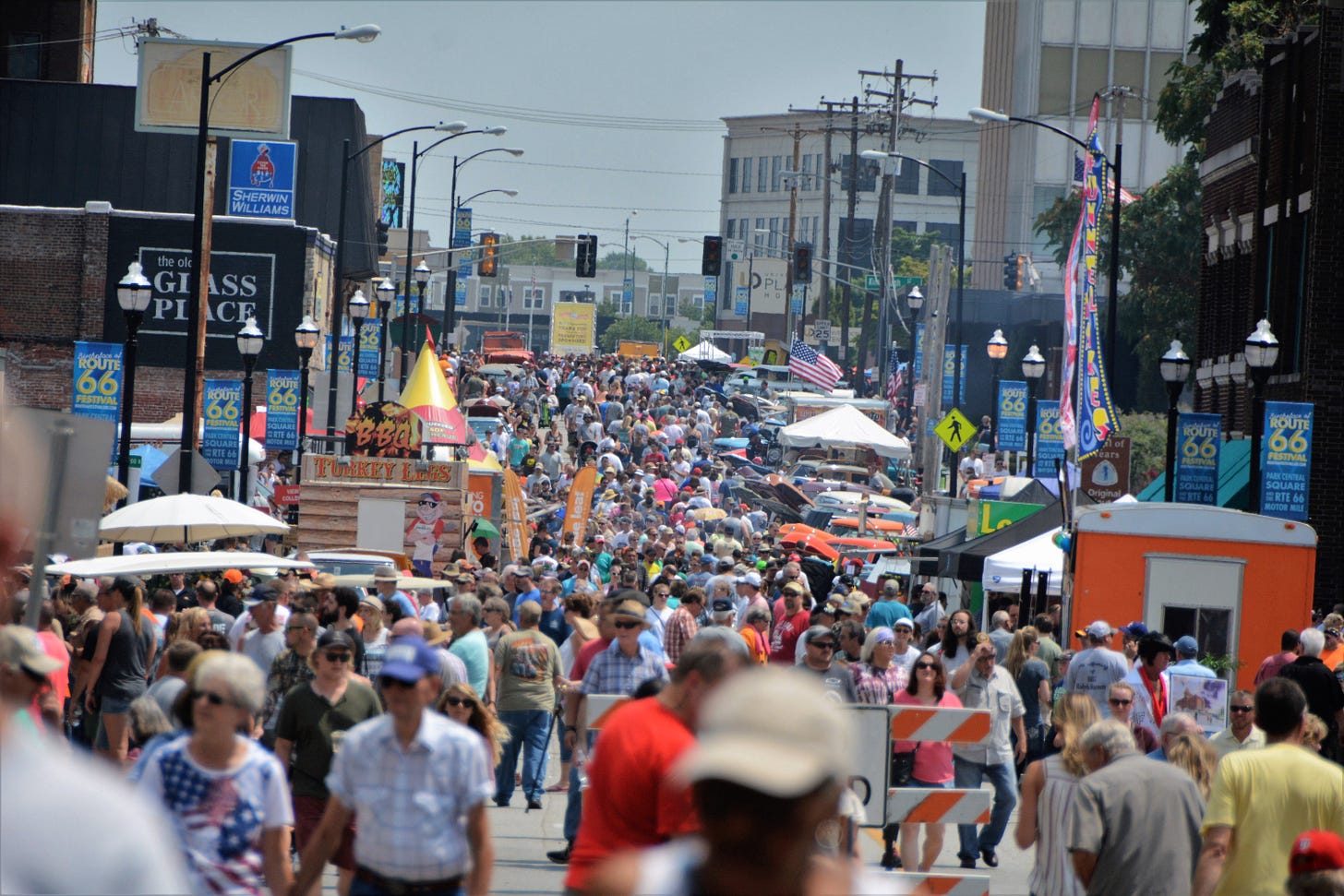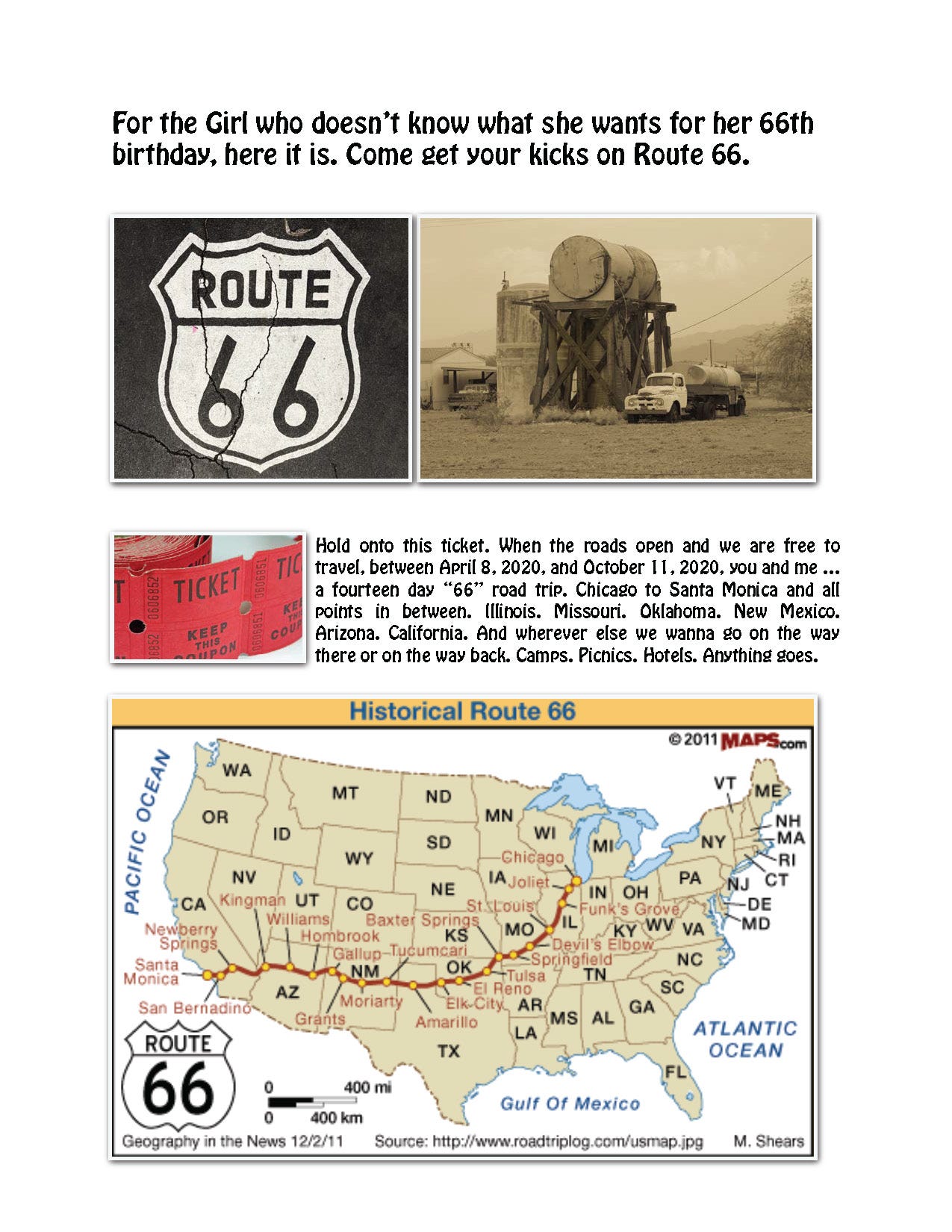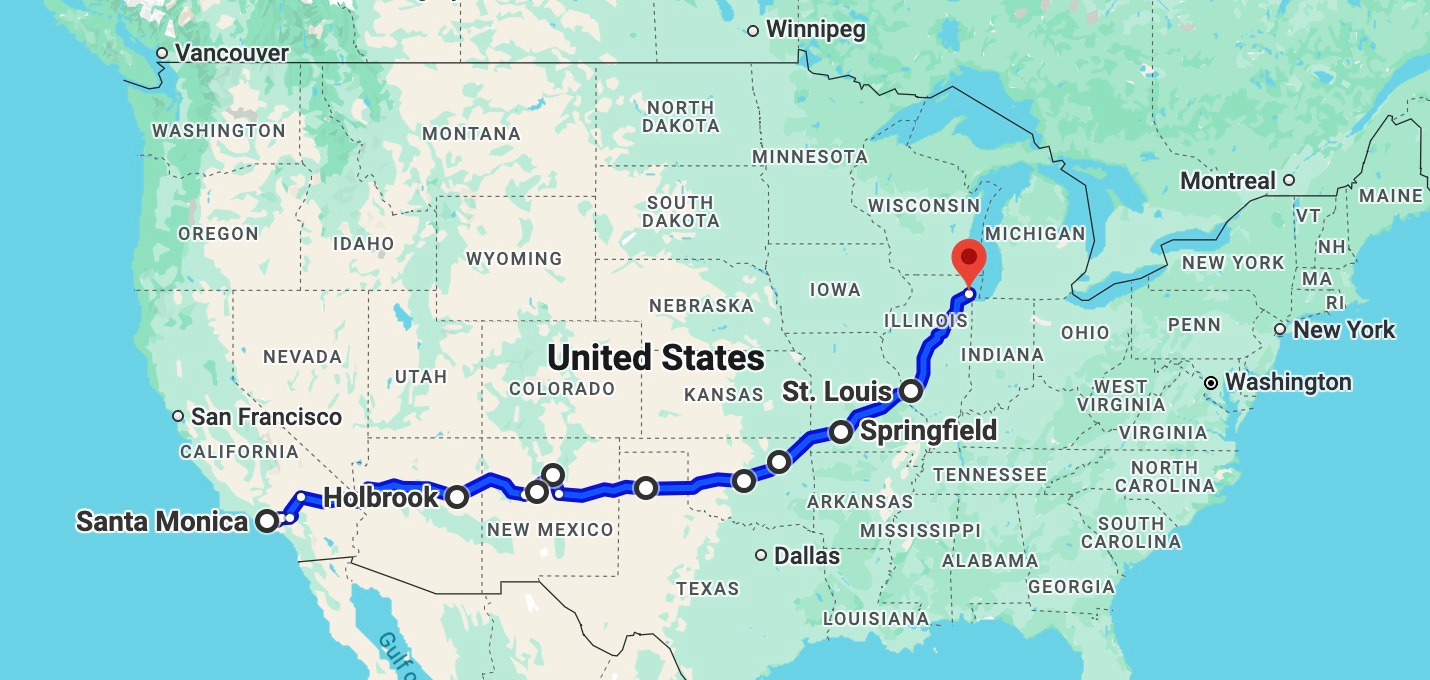100 Years on the Road
There is no more iconic or romantic section of cross country travel in the USA than the Mother Road, Route 66. Next year, 2026, marks 100 years since the establishment of that first interstate route.
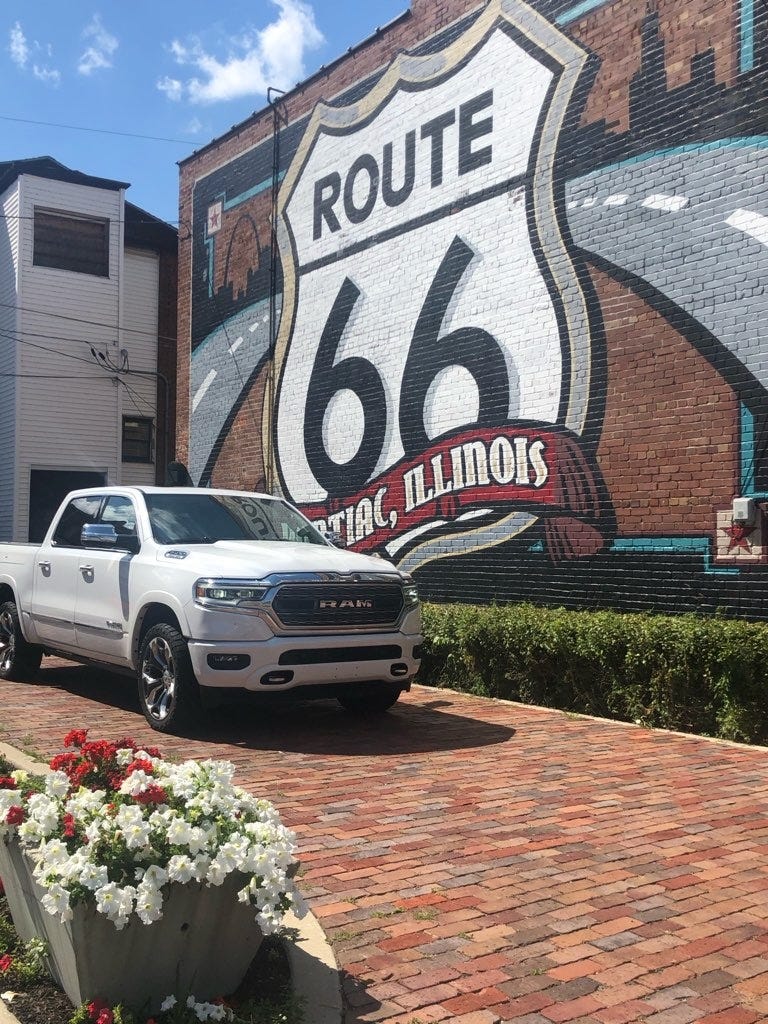
Route 66 holds a special place in the American psyche as a symbol of freedom, opportunity, and adventure. It represents the quintessential American road trip, embodying the spirit of exploration and self-discovery. Historically, it served as a lifeline for families migrating west during the Great Depression and as a pathway to new opportunities. Over time, Route 66 became a cultural icon, representing the pursuit of the American Dream. Its imagery evokes nostalgia, resilience, and the open road, solidifying its legacy as a core part of the national identity and a powerful symbol of American independence and possibility.
The Historicity, Importance, and Contribution of Route 66 to the American Psyche and Soul
Route 66 was commissioned in 1926 as part of a broader effort to create a national system of highways that would improve transportation, facilitate trade, and support the mobility of Americans. The creation of Route 66 was driven by several key factors, including the rapid growth of automobile use, the need for better infrastructure to connect rural and urban areas, and the desire to promote economic development across the United States.
Route 66, often referred to as the "Main Street of America" or the "Mother Road," has captured the imagination of generations of Americans and people worldwide. Spanning from Chicago, Illinois, to Santa Monica, California, this iconic highway embodies more than just a transportation route; it is a symbol of freedom, adventure, and the American spirit. From its historical origins to its cultural impact, Route 66 has carved a permanent place in the American psyche and soul.
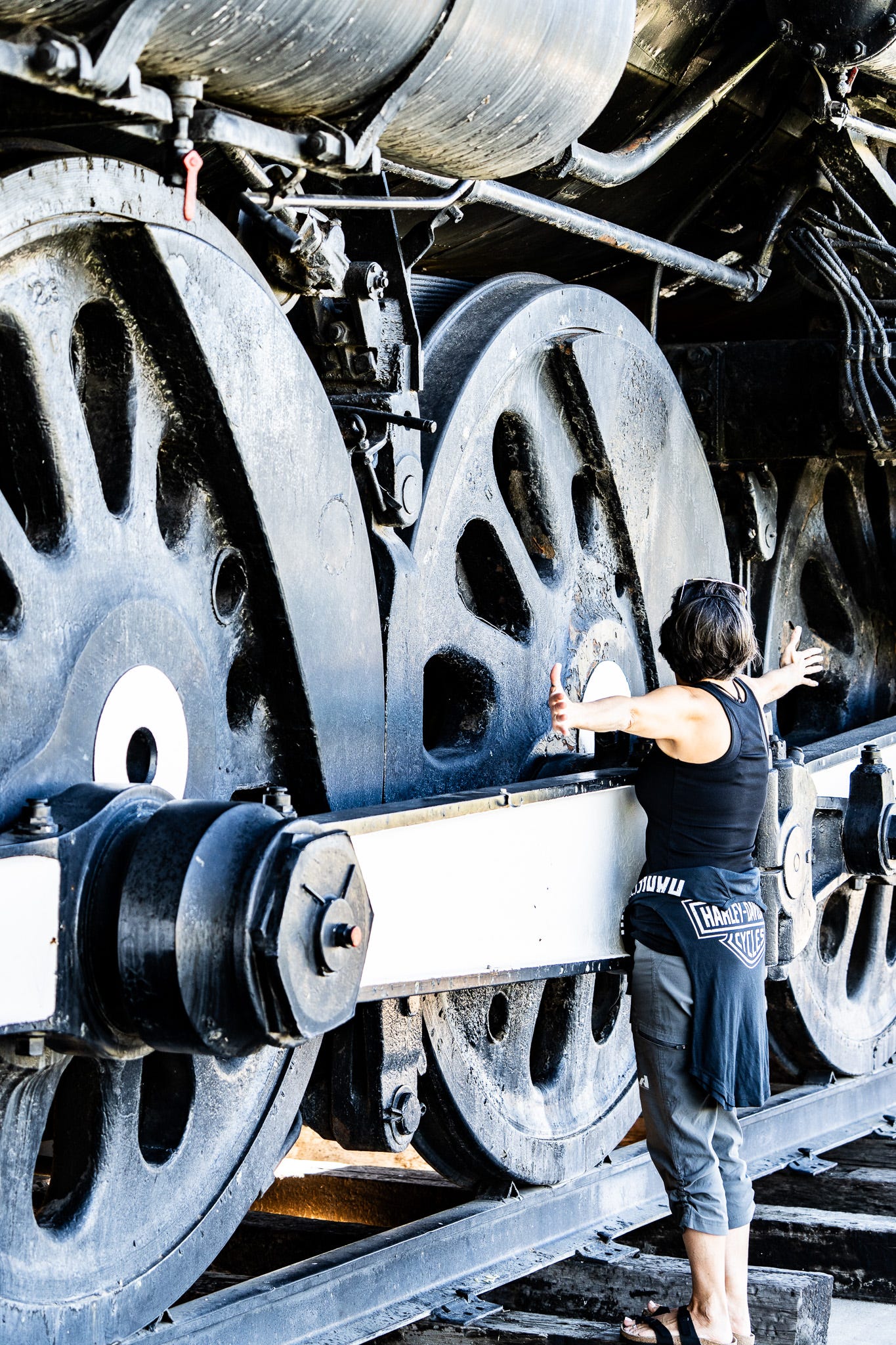
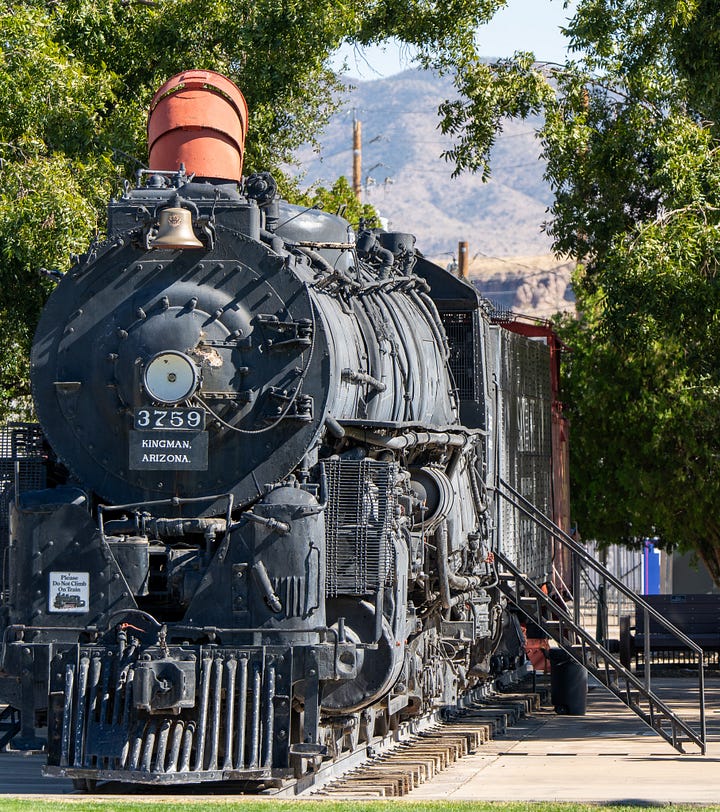
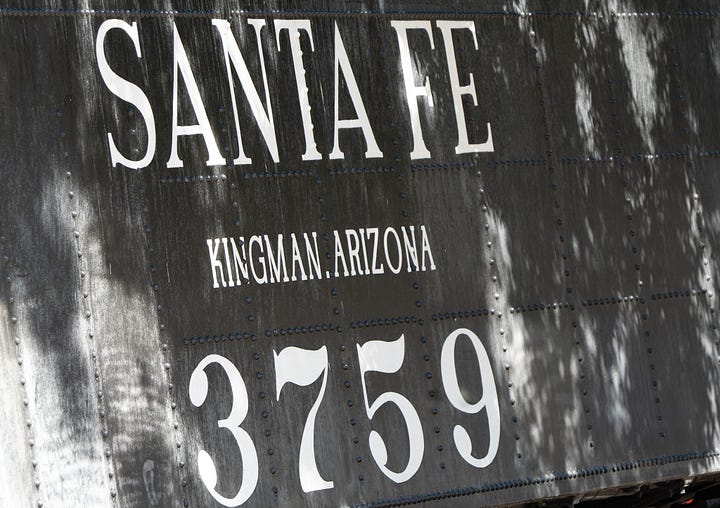
The Historicity of Route 66
The genesis of Route 66 can be traced back to 1926 when the U.S. government officially designated the highway as part of the federal highway system. At the time, it was a significant development in the evolution of the American road network. The road stretched over 2,400 miles, cutting through eight states: Illinois, Missouri, Kansas, Oklahoma, Texas, New Mexico, Arizona, and California. It connected the bustling industrial city of Chicago to the sunny beaches of Santa Monica, providing an essential route for migrating settlers, travelers, and the growing automotive culture in the early 20th century.
Route 66 played a pivotal role during the Great Depression of the 1930s. As the Dust Bowl displaced thousands of families in the Midwest, many Americans turned to Route 66 as a lifeline to the West, particularly to California, in hopes of a better life. This migration, immortalized in John Steinbeck’s novel The Grapes of Wrath, cemented the highway's association with the pursuit of the American Dream.
World War II further increased the road's strategic importance. During the war, it served as a key supply route, facilitating the movement of military personnel, equipment, and resources. After the war, Route 66 continued to serve as a primary artery for domestic travel during a period of booming economic prosperity and suburbanization. The rise of car culture in post-war America and the construction of the interstate highway system in the 1950s, however, gradually led to Route 66’s decline. In 1985, the highway was officially decommissioned, but its legacy continued to thrive in the collective memory of Americans.
The Importance of Route 66
Beyond its logistical function, Route 66 holds immense cultural and symbolic significance. The highway represents more than a mere passage from one place to another. It became a symbol of freedom, mobility, and possibility in an era when the car likewise became an emblem of individualism and self-reliance, thus, Route 66 embodied the spirit of the open road. As Americans sought to escape the confines of city life, Route 66 offered a tangible route to discovery and adventure, connecting diverse regions and cultures in a way that few other roads could.
For many, the journey along Route 66 became a rite of passage, a symbol of America’s restless pursuit of new horizons. The road provided access to iconic small towns, quirky roadside attractions, and a sense of nostalgia for a simpler, more innocent time. The "Route 66 Experience," characterized by neon signs, motels, diners, and gas stations, became synonymous with the golden age of American road trips and the joys of exploration.
Moreover, Route 66 was integral to the development of American tourism. The highway played a significant role in shaping the concept of domestic travel as millions of Americans embarked on family vacations during the mid-20th century. The road was more than just a path to get from one place to another—it was a destination in itself. Small businesses along the route flourished as travelers sought out unique places to eat, sleep, and shop, establishing a vibrant culture of Americana that continues to resonate today.
Contribution of Route 66 to the American Psyche and Soul
The cultural contributions of Route 66 to the American psyche are immeasurable. It has become a symbol of adventure, nostalgia, and the quest for personal fulfillment. The road is an enduring metaphor for the pursuit of the American Dream: the idea that anyone, regardless of background or circumstance, can embark on a journey to create a better life for themselves. In this way, Route 66 encapsulates the very essence of American identity—a land of opportunity, possibility, and reinvention.
Route 66 also contributed to the development of American music, literature, and popular culture. Songs like "Route 66" by Bobby Troup, first recorded in 1946 and later covered by artists like Chuck Berry and The Rolling Stones, immortalized the highway in the annals of American music. The song, with its catchy tune and imagery of the road, brought Route 66 into the mainstream, further solidifying its place in the collective consciousness of Americans. Films like The Grapes of Wrath and Route 66 (a popular TV show that aired from 1960 to 1964) depicted the road as a symbol of both hardship and hope, cementing its role as a cultural icon. Future generations will be able to experience the magic and myth of the Mother Road. Even America's children have been introduced to the magic and renewal of the Mother Road though Disney's Cars1 and the celebratory sounds of John Mayer's Route 662 and James Taylor's Our Town.3
Even today, Route 66 continues to inspire countless people, with enthusiasts taking pilgrimages to drive its remaining stretches, visit its museums, and see its roadside landmarks. Its preservation as a historical and cultural artifact ensures that future generations will be able to experience the magic and myth of the Mother Road.4
In a broader sense, Route 66 has contributed to the shaping of American identity in the global imagination. As an enduring symbol of America’s car culture and its spirit of innovation, freedom, and individualism, the highway continues to captivate people worldwide, drawing tourists and travelers eager to experience a piece of American history and culture.
Conclusion
Route 66 occupies a unique and irreplaceable position in the American consciousness. Its history, importance, and contributions to the cultural and spiritual fabric of the nation are vast and profound. From its humble beginnings as a practical route for travelers to its rise as a symbol of adventure, possibility, and freedom, Route 66 remains a testament to the enduring power of the open road and the dreams of those who have traveled it. The legacy of Route 66 is not merely found in the asphalt and landmarks that still dot the American landscape but in the stories, memories, and aspirations it continues to inspire. For many, the road is more than just a place — it is a metaphor for the American journey itself.5
Eleven Notables About Route 66
The Birth of "The Mother Road": In 1926, Route 66, almost 2,500 miles long, was officially established as part of the U.S. highway system, connecting Chicago, Illinois, to Santa Monica, California. This marked the beginning of its legendary status.
Dust Bowl Migration: During the 1930s Dust Bowl, Route 66 became a vital path for displaced farmers and families migrating westward in search of new opportunities, famously depicted in John Steinbeck's "The Grapes of Wrath."
World War II and Military Transport: Route 66 played a crucial role during World War II, serving as a key artery for transporting military equipment and personnel across the country.
The Rise of Roadside Attractions: The post-war era saw a boom in tourism, leading to the development of iconic roadside attractions, quirky motels, and diners that defined the Route 66 experience.
"Get Your Kicks on Route 66": The popular song "(Get Your Kicks on) Route 66" helped solidify the highway's place in American popular culture, further enhancing its mystique.
The Impact of the Interstate System: The construction of the Interstate Highway System in the 1950s and 1960s led to the gradual decline of Route 66, as faster, more modern highways bypassed many of its towns.
The Decommissioning: In 1985, Route 66 was officially decommissioned, but its legacy continued to live on.
Preservation Efforts: In the late 20th and early 21st centuries, efforts to preserve and revitalize Route 66 gained momentum, with historical societies and preservation groups working to protect its landmarks and history.
Route 66's Cultural Significance: Route 66 became a symbol of American freedom, the open road, and the spirit of adventure, deeply embedded in the nation's cultural identity.
Centennial Celebrations: Leading up to 2026, there are many events being planned to celebrate the 100 year anniversary of Route 66. This will bring renewed intrest in the historic highway.
“American Indians and Route 66”: This 66-page publication produced by the American Indian Alaska Native Tourism Association provides a fascinating cultural and historical “realignment” of perceptions about the “give and take relationship between the asphalt and the American Indian people — from the physical intrusion of the road on American Indian lands to the new commerce the road introduced.” 6 (The full document is linked at footnote 4.)
Main Cities En Route
Chicago, Illinois
St. Louis, Missouri
Springfield, Missouri
Tulsa, Oklahoma
Oklahoma City, Oklahoma
Amarillo, Texas
Santa Fe, New Mexico
Albuquerque, New Mexico
Holbrook, Arizona
Flagstaff, Arizona
Kingman, Arizona
Barstow, California
Pasadena, California
Los Angeles, California
Santa Monica, California

For a quick tour of how Route 66 inspired the storyline of Cars, this link provides a good summary —
John Mayer’s Route 66 —
James Taylor’s Our Town —
There is a massive amount of organizational and institutional interest in Route 66. Here is a snapshot of some of the organizations that are likely to have a level of stakeholder interest in an effective and widespread celebration of the Route 66 Centennial (1926-2026) —
Government & Public Agencies
National Park Service (NPS) Route 66 Corridor Preservation Program – Supports preservation and promotion of Route 66.
State Departments of Transportation (DOTs) – Covers all eight states (IL, MO, KS, OK, TX, NM, AZ, CA) for infrastructure support and event coordination.
National Trust for Historic Preservation – Advocates for preserving Route 66 landmarks and cultural heritage.
U.S. Department of Transportation & Federal Highway Administration – May provide funding and logistical support for centennial events.
Historic & Cultural Organizations
Route 66 Road Ahead Partnership – A leading nonprofit working to protect, promote, and revitalize Route 66.
American Association of State Highway and Transportation Officials (AASHTO) – Involved in historic and modern highway infrastructure projects.
State and Local Route 66 Associations – Groups such as the Illinois Route 66 Association, Oklahoma Route 66 Association, and others that promote the highway’s history.
Smithsonian Institution – National Museum of American History – Could create exhibits highlighting Route 66’s impact.
Tourism & Economic Development Groups
Travel & Tourism Bureaus – State and regional tourism boards can promote events and attractions along the route.
U.S. Travel Association – National advocacy group for tourism, which could help drive interest in Route 66 events.
Historic Hotels & Motels – Businesses like the Blue Swallow Motel and Wigwam Motels that represent the highway’s history.
Chambers of Commerce – Local businesses along Route 66 that could participate in and sponsor events.
Automotive & Transportation Industry
Ford Motor Company, General Motors and Phillips 66 – Major automakers and fuel suppliers historically tied to Route 66, potentially sponsoring car shows or restoration projects.
Classic Car & Motorcycle Clubs – Groups like the Vintage Chevrolet Club of America and Harley-Davidson Riders interested in road trips and exhibitions.
American Automobile Association (AAA) – Could create special travel guides and road trip resources for the centennial.
Media, Arts & Entertainment
Hollywood & Film Industry – Given Route 66’s influence in pop culture, film studios and production companies could support documentaries or films.
Music & Arts Festivals – Celebrating Route 66’s cultural impact with concerts featuring artists tied to its legacy (e.g., rockabilly and blues musicians).
Major News & Media Outlets – National Geographic, The History Channel, and PBS could cover the centennial and its significance.
Academia & Research Institutions
Universities with Historic Preservation Programs – Institutions like the University of New Mexico and Missouri State University, which study Route 66’s history.
Local Historical Societies & Museums – Museums dedicated to Route 66 history and memorabilia could host centennial exhibits.
One of the US’s major national gas brands with a history very much linked to the century of Route 66 is Phillips 66. Those who travel only on eastern roads may not know this brand, but Texas-based Phillips 66 is a significant player in the national gas landscape, operating Conoco, Phillips 66, and 76 stations across 44 US states. It is the fourth-largest finished lubricants supplier in the US. Further, its name derives directly from Route 66. This long-lived company, formed one year after Route 66, celebrates its own centennial in 2027.







